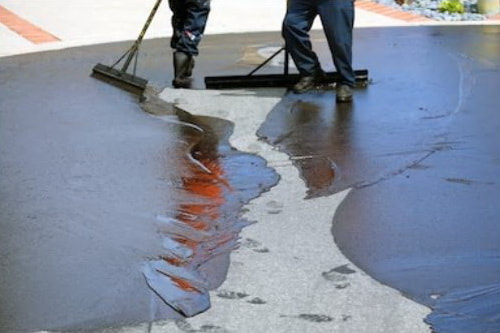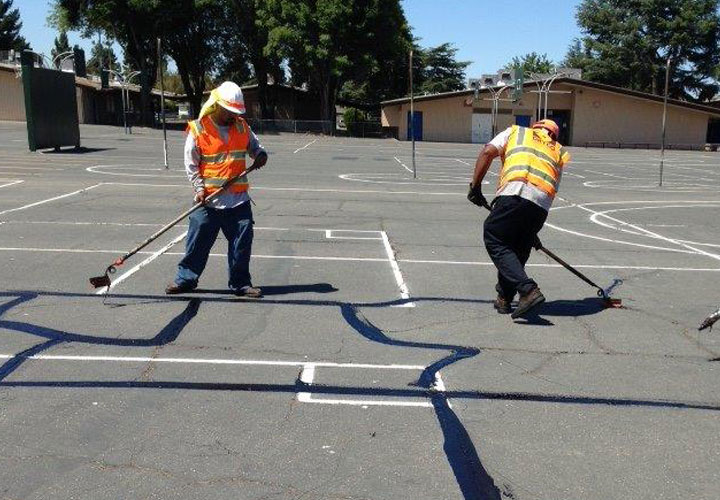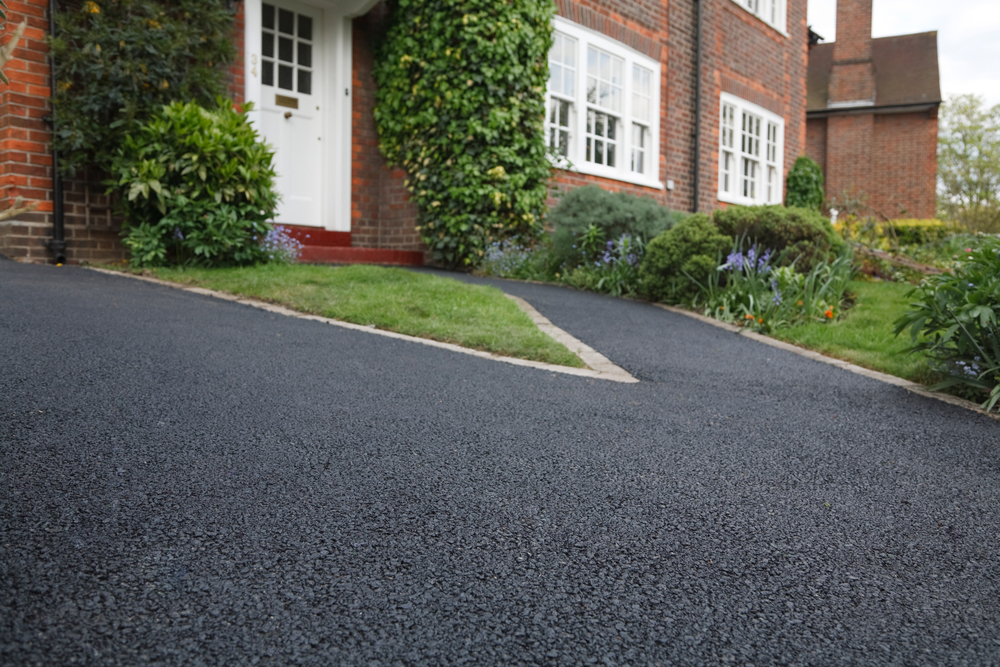Hot Mix Asphalt: A Sustainable Solution for Pavement
Warm Mix Asphalt (HMA) has emerged as a leading sustainable selection for pavement services, providing a myriad of ecological advantages and innovative modern technologies. As the demand for eco-friendly building and construction methods grows, checking out the nuances of HMA's sustainability can supply important understandings right into the future of sidewalk options.
Ecological Benefits of Warm Mix Asphalt

Moreover, Hot Mix Asphalt aids to alleviate urban warm island effects. Its dark color soaks up sunshine, decreasing the quantity of heat showed back into the environment compared to lighter-colored pavements. This can decrease ambient temperatures in city areas, reducing the demand for air conditioning and eventually reducing power usage.
In addition, Hot Mix Asphalt contributes to improved stormwater administration. Its permeable nature permits water to reenergize and penetrate the sidewalk groundwater supplies, reducing runoff and the danger of flooding. These ecological advantages make Warm Mix Asphalt a lasting selection for paving highways and roadways.
Energy Efficiency in HMA Production
Is power performance a vital variable in the manufacturing of Warm Mix Asphalt (HMA)? Definitely. Power plays a significant role in the production of HMA, impacting both cost and environmental sustainability. One crucial element of energy performance in HMA manufacturing is the usage of cozy mix asphalt (WMA) modern technologies (hot mix asphalt). WMA enables the blending and positioning of asphalt at reduced temperature levels contrasted to standard hot mix asphalt, leading to decreased energy consumption during manufacturing. This procedure not only decreases fuel use yet likewise reduces greenhouse gas emissions, making it a more eco-friendly alternative.
Moreover, advancements in plant innovations have actually led to more energy-efficient HMA manufacturing processes. By enhancing power usage in HMA manufacturing, the sector can reduce its carbon footprint while keeping top quality sidewalk products.
Recyclability of Warm Mix Asphalt
The recyclability of Hot Mix Asphalt (HMA) is a critical facet of its sustainability and lasting environmental effect. HMA is just one of the most recycled materials in the USA, with over 100 million lots of reclaimed asphalt pavement (RAP) being reused every year in brand-new pavement building. Reusing HMA offers several environmental advantages, such as lowering the requirement for virgin products, decreasing power intake during production, and reducing the quantity of waste sent out to land fills.
The procedure of reusing HMA includes milling the existing sidewalk, crushing it into smaller items, and blending it with brand-new aggregate and asphalt binder to develop a recycled mix. Overall, the recyclability of HMA plays a substantial function in promoting lasting techniques within the sidewalk market.

Long-Term Efficiency of HMA
Asphalt pavements demonstrate sturdiness and durability over a prolonged duration, mirroring the lasting efficiency of Warm Mix Asphalt (HMA) The long life of HMA can be credited to its ability to withstand rush hour tons, extreme weather, and the impacts of aging. Researches have actually shown that well-designed and effectively created HMA pavements can last for two decades or even more with normal upkeep. The secret to maximizing the long-term performance of HMA depends on making use of high-grade products, complying with ideal practices in construction, and implementing reliable upkeep techniques. Correct drain, routine evaluations, and prompt fixings are necessary for protecting the structural integrity of HMA sidewalks gradually. Furthermore, advancements in HMA modern technology, such as using polymer-modified binders and cozy mix asphalt, have further boosted the sturdiness and longevity of HMA sidewalks. By focusing on high quality construction and upkeep methods, HMA continues to verify itself as a sustainable and cost-effective remedy for lasting sidewalk facilities.

HMA: Resilience and Sustainability
Demonstrating both look at this site longevity and sustainability, Warm Mix Asphalt (HMA) has come to be a foundation in the construction of long-lasting sidewalk infrastructures - commercial parking lot paving. HMA's toughness stems from its capacity to stand up important source to hefty tons, harsh climate conditions, and high website traffic volumes, making it a trusted option for roadways, freeways, and airport runways. The make-up of HMA, which generally includes accumulations, binder, and filler, plays a crucial function in boosting its longevity and resistance to tear and wear
Moreover, HMA's sustainability hinges on its recyclability and energy-efficient production procedure. The ability to recycle redeemed asphalt pavement (RAP) in brand-new HMA mixtures decreases the need for virgin products and reduces the ecological impact of pavement building and construction and upkeep. Additionally, the energy effectiveness of generating HMA depends on its lower blending temperature levels contrasted to other pavement materials, bring about lowered power hot mix asphalt intake and greenhouse gas emissions.
Final Thought
In conclusion, hot mix asphalt (HMA) supplies a lasting solution for pavement with its eco-friendly characteristics. HMA's recyclability, energy efficiency in production, and long-term sturdiness make it a green choice for road building. By saving natural deposits, reducing waste, and lowering greenhouse gas discharges, HMA plays a vital duty in advertising sustainability in facilities advancement. Its capability to reduce urban warm island impacts even more highlights its relevance in developing resistant and eco mindful sidewalk systems.
HMA is one of the most recycled materials in the United States, with over 100 million heaps of recovered asphalt sidewalk (RAP) being reused annually in brand-new pavement construction.The procedure of recycling HMA entails grating the existing pavement, squashing it into smaller sized pieces, and blending it with new accumulation and asphalt binder to produce a recycled mix.Asphalt sidewalks demonstrate durability and durability over an extensive period, mirroring the long-lasting efficiency of Hot Mix Asphalt (HMA) Additionally, improvements in HMA technology, such as the usage of polymer-modified binders and warm mix asphalt, have actually further improved the durability and durability of HMA pavements. The capability to recycle recovered asphalt sidewalk (RAP) in new HMA mixes lowers the demand for virgin products and minimizes the environmental influence of pavement building and maintenance.